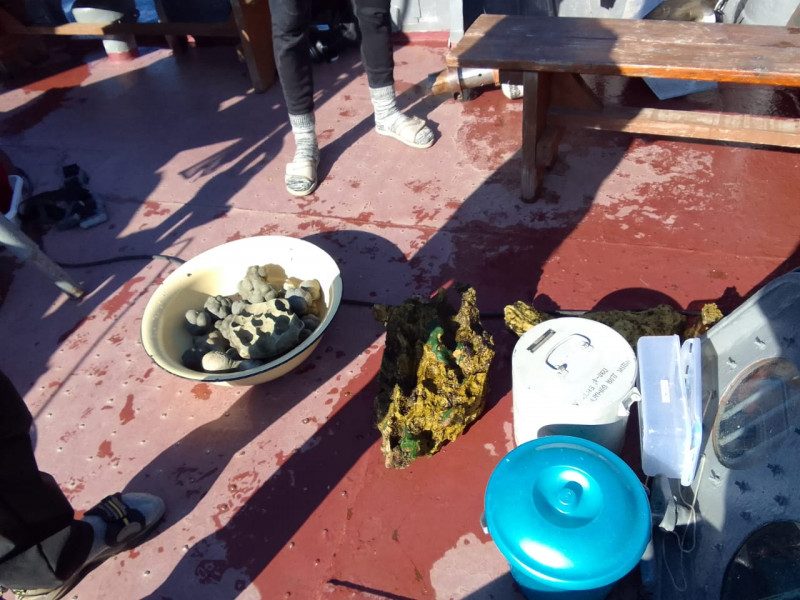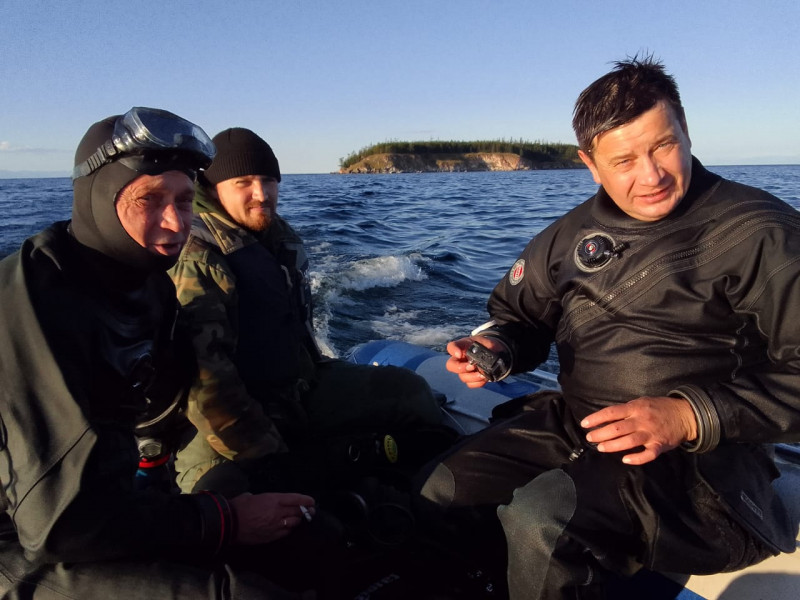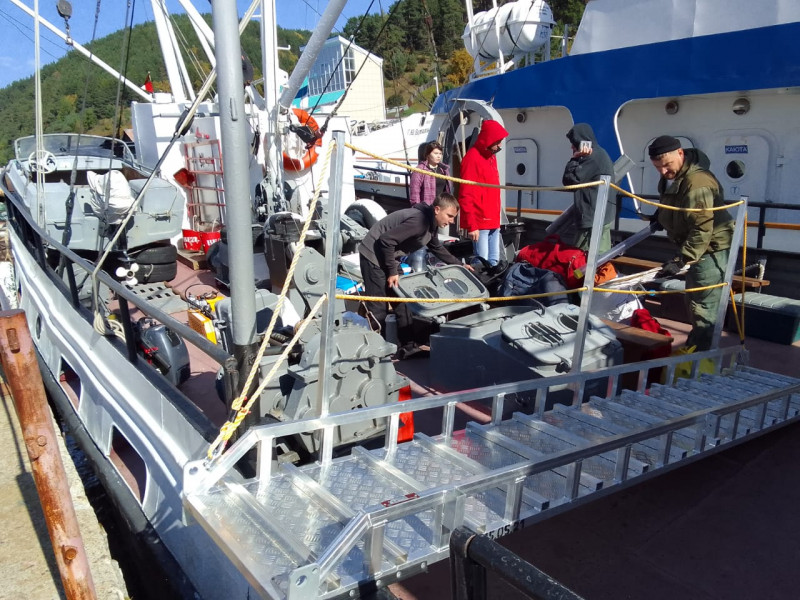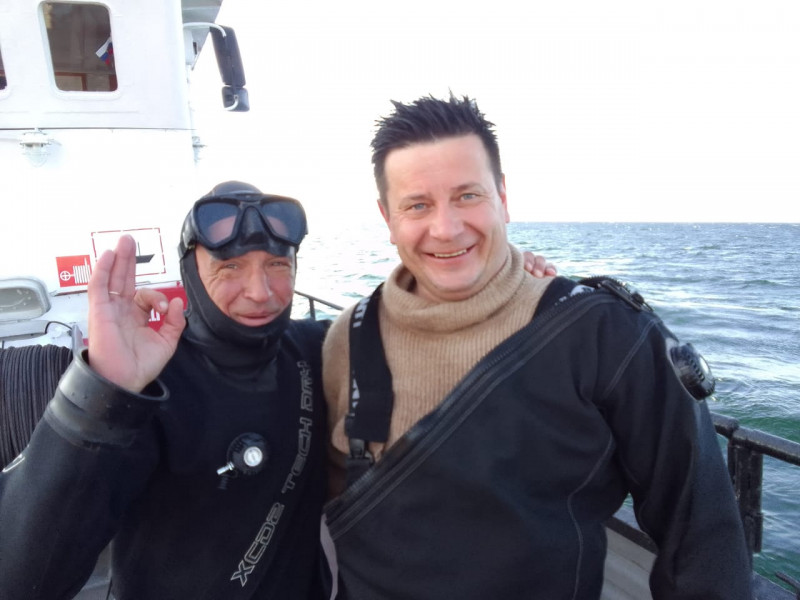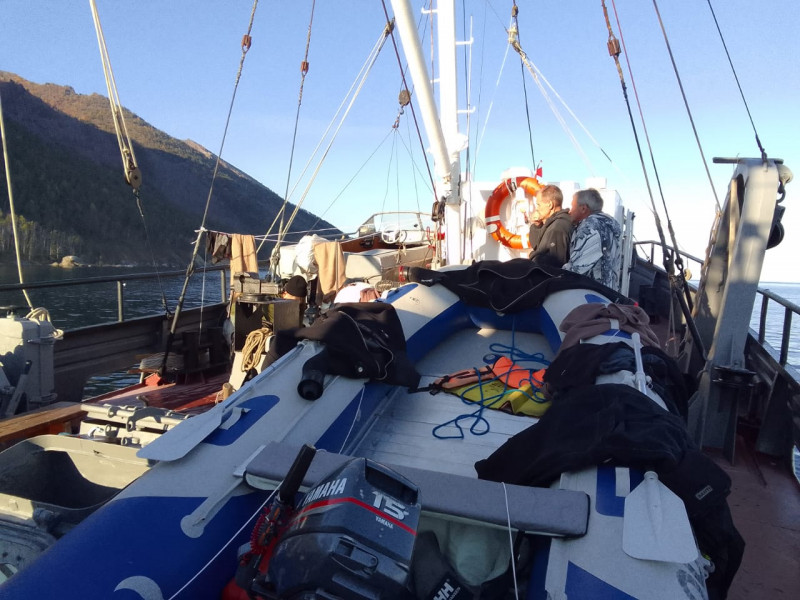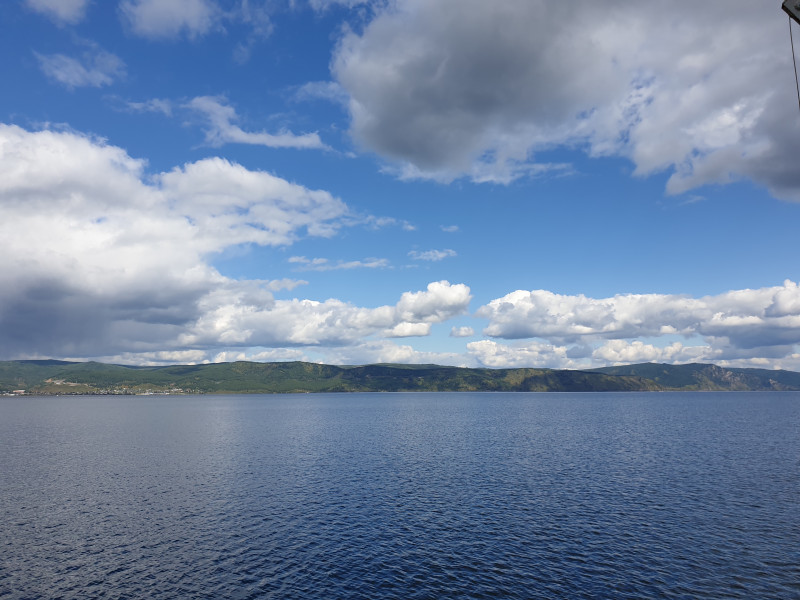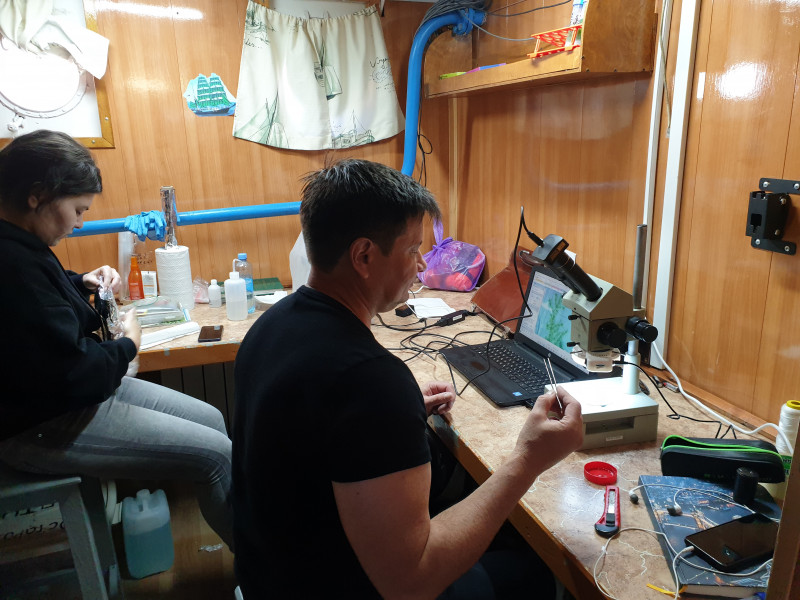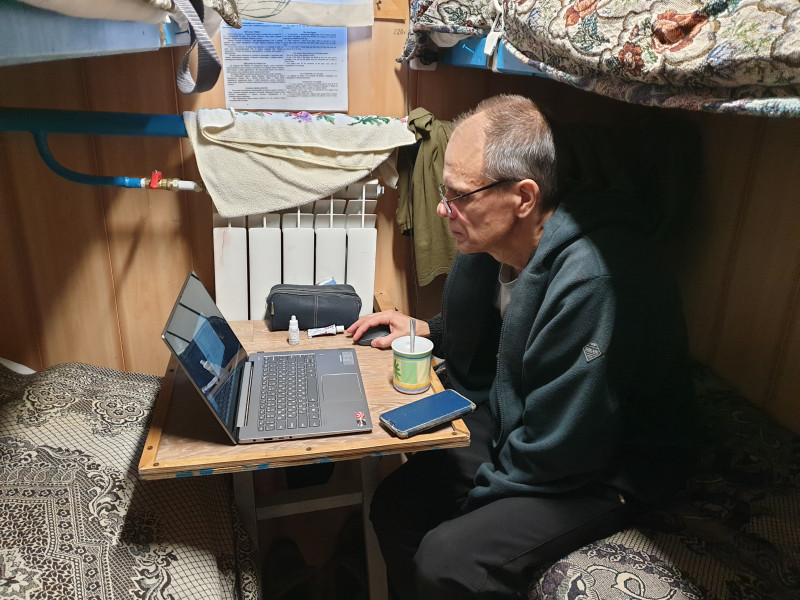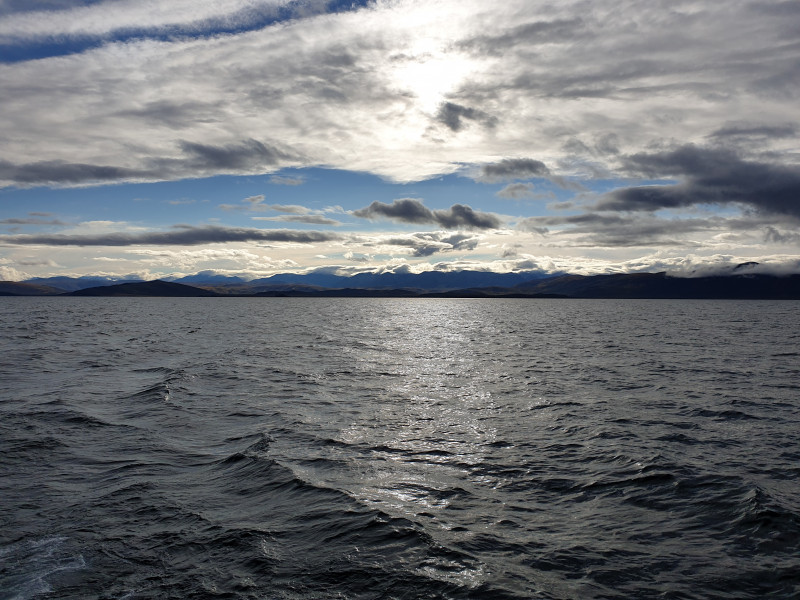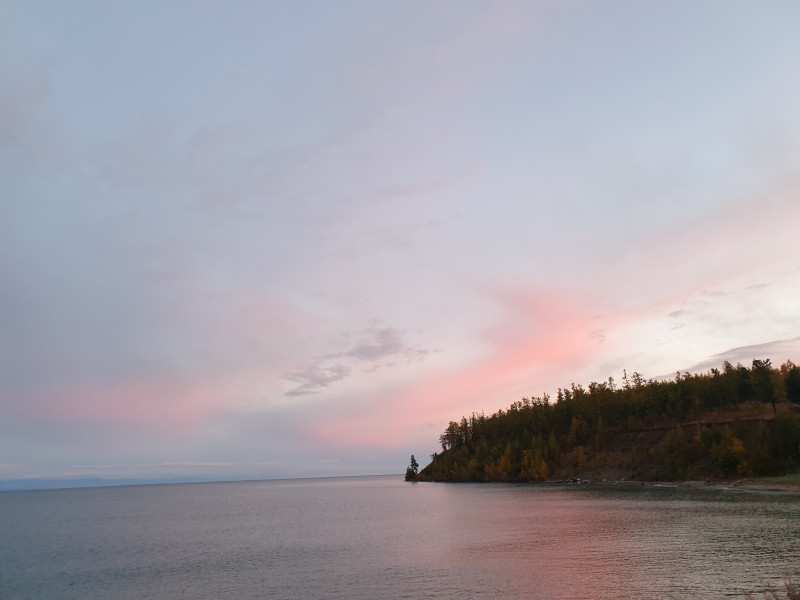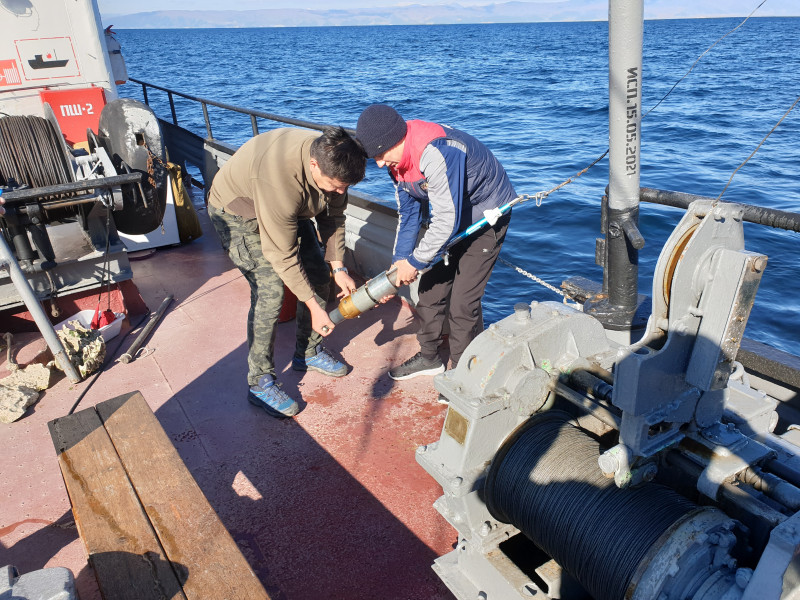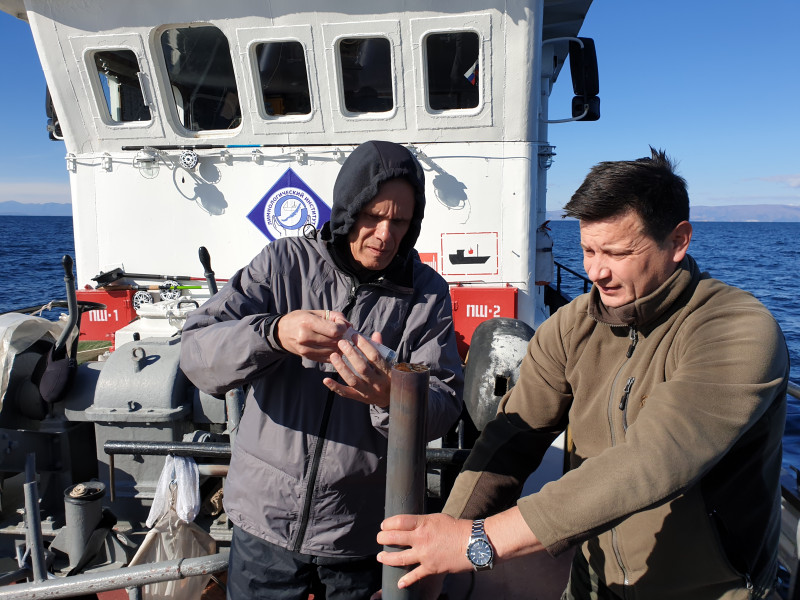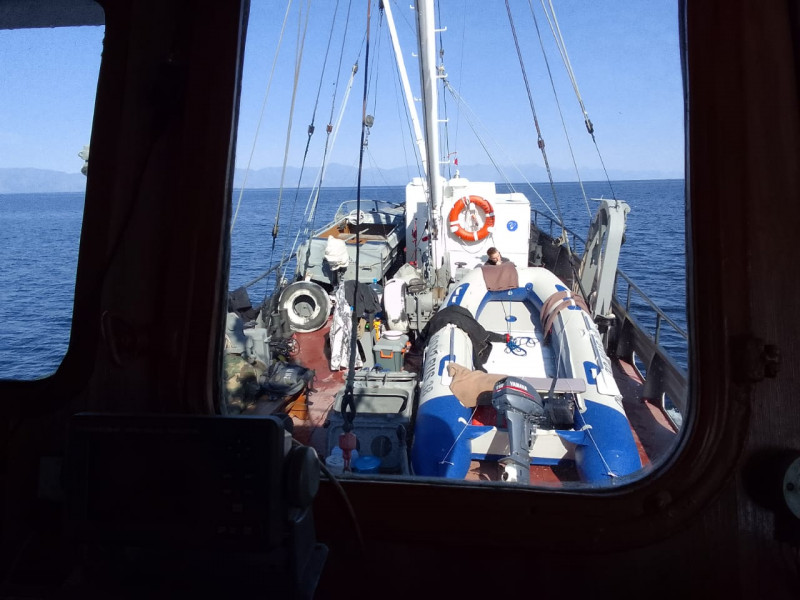Expedition on board the RV “Titov” from 17 to 25 September 2021
The expedition was carried out within the framework of the programmes "Study of seasonal and long-term transformations of the state of water bodies and watercourses in East Siberia in the context of climate change, geological environment and anthropogenic pressures" and "Genetics of communities of Baikal organisms: the structure of the gene pool and conservation strategies".
Expedition aims:
- Continuation of the expedition series around Lake Baikal to assess the state of the shallow zone of Lake Baikal over years, involving research divers at test sites, along transects and at monitoring stations, to replace temperature loggers for obtaining year-round temperature data and to collect samples of the members of the genus Draparnaldioides and filamentous algae for the subsequent molecular genetic analysis to clarify their taxonomic status
- Study of the distribution pattern of environmental DNA (eDNA) in the watershed of the lake in relation to the study of the diversity of near-bottom deep aquatic organisms.
Expedition tasks:
- to obtain information about year-round control of temperature regime in the near-bottom layer of the shallow zone of Lake Baikal in areas of transects and stations (at depths of 4, 6, 12, and 15 m);
- to carry out a visual assessment of the disease in Baikal sponges in areas of annual fieldworks at control benchmarks;
- to sample soil at the layer up to 1 cm for eDNA extraction at sites of the local concentration of cottoid fish populations at distances of 10, 30 and 50 km from these sites;
- to sample soil in each basin of Lake Baikal for preliminary assessments of eDNA distribution in the watershed of the lake;
- to collect samples of late summer members of the genus Draparnaldioides for the subsequent molecular genetic analysis to clarify their taxonomic status;
- to sample deep-water soils for studying mycobiota in the lake;
- to collect live molluscs of the family Acroloxidae.
Fieldwork fulfilled:
During the expedition, the recording and reading of information, as well as programming and setting of temperature loggers for year-round monitoring of the temperature regime in the bottom layer of the shallow zone of the lake, was carried out by sites (test site in Listvennichny Bay, test site Varnachka, transects of Cape Ukhan, Cape Elokhin, Cape Turali, railway station Ulanovo, Nozhneye Izgolovie in the Svyatoy Nos Peninsula, and Aya Bay) along the laid transects (at depths of 4, 6, 12, and 15 m).
Samples of macrophytes of the genus Draparnaldioides were collected. Ten seasonally vegetating species are described in the lake’s flora, which are distinguished by high morphological variability and, therefore, are difficult to identify (Izhboldinа, 2007; Vishnyakov, 2020). A molecular genetic study of Draparnaldioides was previously carried out for one species, D. simplex, that develops in Lake Baikal during early summer (Mincheva et al., 2013). In the course of the expedition, the material on the species predominating in late summer was collected. The data on molecular genetic and morphological analyses will be used for the comprehensive taxonomic revision of this genus.
Samples of deep-water soils were taken for inoculation on selective growth media (potato glucose agar, wort agar and depleted wort) to study the diversity of the Baikal mycobiota. During the expedition, 127 inoculations were carried out. The results obtained will be used for species identification of fungi and fungus-like organisms by morphological and molecular genetic methods as well as screening cultures for the presence of enzymes and determining their activity to find the most effective biodestructors.
To study the distribution of eDNA in areas with bounded by species range and beyond, the soil was sampled from seven sites near Frolikha Bay, an area of local concentration of the members of the endemic cottoid species Neocottus termalis. Two sites were located directly in the habitat of the species, and five sites were located at different distances from the habitat.
Soil samples were taken at 20 sites throughout the watershed of the lake. The obtained material will evaluate the accuracy of using eDNA for assessing the boundaries of the habitats of species and populations of Baikal aquatic organisms.
In Chivyrkuy Bay (opposite the estuary of the Bolshoy Chivyrkuy River), live molluscs of the family Acroloxidae (Gastropoda) were collected for the subsequent examination of the ultrastructure of their reproductive organs and germ cells by light, scanning and electron microscopy.
Samples of L. baikalensis were collected to study species composition of macroinvertebrates associated with healthy and diseased branching sponges near Aya Bay, Ukhan Cape, Elokhin Cape, Nemnyanka Cape, Nizhneye Izgolovie in the Svyatoy Nos Peninsula.
Filamentous algae were sampled from different areas of the shallow waters of the lake.




